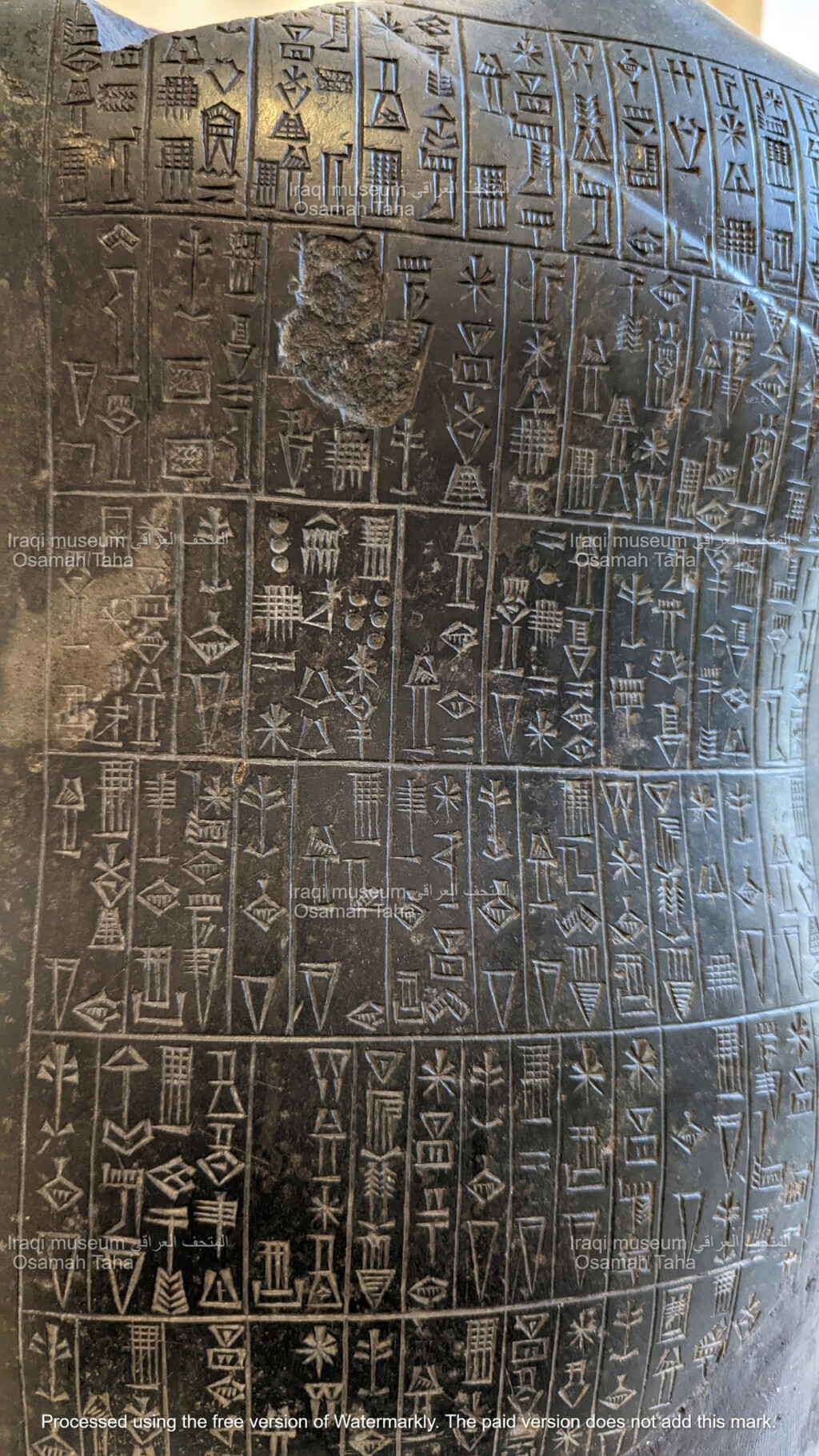Sumerian cuneiform inscriptions inscribed on the back of a statue of King Gudea

Some Sumerian cuneiform writings inscribed on the back of a statue of the ruler of Lagash, Ur Bao or Ur Baba, dating back to the year 2080-2092 BC. Under the rule of this ruler, Lagash enjoyed economic prosperity.
Gudea or Gudea (in Sumerian) is one of the most famous Sumerian kings of the Lagash dynasty (in Sumerian:), which ruled southern Mesopotamia (Mesopotamia), one of the oldest Sumerian cities. He was the twelfth king of the Lagash dynasty and ruled from the year (2144 - 2124 BC). However, it is likely that he was not from the city of Lagash, but he married Ninala, the daughter of King Ur-Zababa (2144 - 2164 BC), King of Lagash. Lagash was experiencing a golden age, with a high level of independence. The Gudea period was considered part of the Sumerian Renaissance.
Through the inscriptions, it appears that Gudea built the temple in the cities of Ur, Nippur, Adab, Uruk, and Tell Medina, and this indicates the development of the kingdom during the period of Gudea’s rule. The gift of Orbaba’s daughter to Gudea indicates his political power, and some excavations near the Emirate of Anshan also indicated the presence of some ancient weapons. It dates back to the Sumerian era, and this indicates the military power of the Lagash dynasty in its time.
Cudea chose the title “Ensi” (king of the city or ruler), and not the more exalted title of “Lugal”. Despite the wars that Cudea fought and his conquest of Elam and Anshan, most of the inscriptions emphasize the development that took place during his reign, including the construction of irrigation canals and temples, and the establishment of... Precious gifts to the gods.
The statue is incomplete, missing the head, and it is displayed in the Louvre Museum. It was found in the city of Creso... Pictorial 2023
Source: websites

